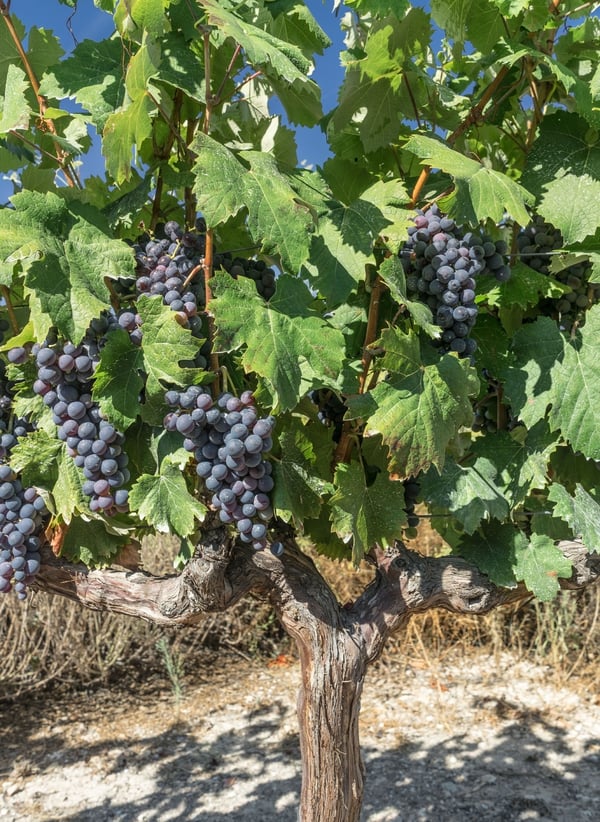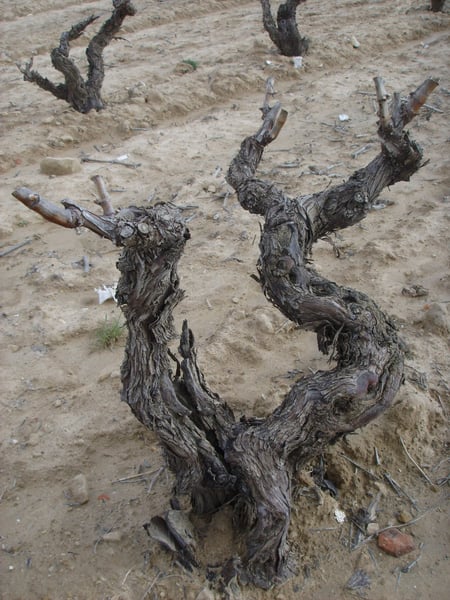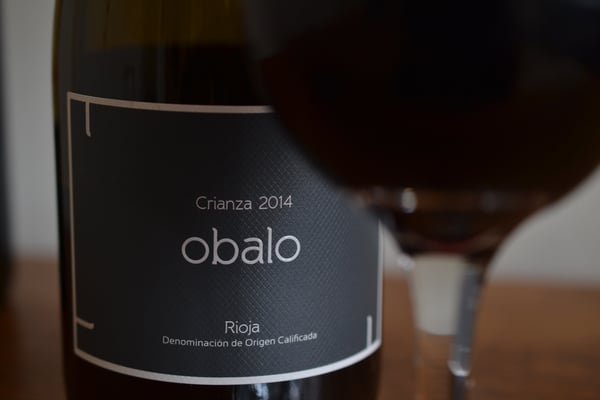Everything You Need to Know About Rioja

One of the most frequent questions I'm asked while tasting wine to customers is which wine is my favorite. I don't know if I have a single favorite wine or style of wine, but I definitely have wines I favor and among those is Rioja.
Named for the river (río) Oja, in Northeast Spain, a majority of the Rioja wine region falls within the province it shares its name with, though it partially extends into the Basque region to the Northwest and Navarra to the Northeast. As you might imagine, a wine region that spans the width of an entire province is quite large and because of that climates within the region can be very different. To account for those differences, Rioja is subdivided into three zones: Rioja Alta, Rioja Alavesa, and Rioja Baja. To further complicate matters, each of those regions have grape and winemaking preferences that can lead to drastic differences in the final product.

Tempranillo grapes
Rioja has a long history of wine production, there is evidence that the Romans were producing wine here, possibly as early as the second century BCE, and we know vines were being cultivated in Spain as far back as 3000-4000 BCE. In the 8th century, during the Moorish occupation of Iberia, production waned, but was still permitted under Islamic rule due to the economic benefits as an export product. After the Christians recaptured the region from the Moors, between the 13th and 15th century, wine production flourished once again, though commercially it suffered compared to regions like Bordeaux due to the physical isolation of the region. Improvements in communication and transportation technologies enabled Rioja to achieve a golden era in the mid-to-late 19th century, when Bordeaux was struck first by powdery mildew and then by phylloxera. This success continued until 1901 when phylloxera struck Rioja, by which time Bordeaux had successfully grafted their vines to phylloxera-resistant rootstocks and demand for Rioja declined. Over the past century there has been a great deal of funding devoted to modernizing the region and its winemaking techniques, as well as the establishment of an official Spanish appellation system that began with Rioja in 1926.
The primary red grape of Rioja is Tempranillo, though there are five officially permitted grapes in the Rioja DO. Garnacha is commonly used for blending, adding body to Tempranillo grown in cooler climates. Carignan and Graciano are officially permitted, though they are less common. The fifth official red grape is Maturana Tinta, however DNA testing has revealed more than one variety of grape has been planted under this name, adding more confusion to an already complex situation. Cabernet Sauvignon and Merlot are being tested in the region and may be present in small amounts, but are never listed by name on the label.
Macabeo (sometimes called Viura) is the most commonly planted white wine grape, though for many years it had been Malvasía. Traditionally, Garnacha Blanca has been permitted and more recently, Verdejo, Sauvignon Blanc, and Chardonnay have been allowed. There are a handful of local varieties that are also on the list, including a light-skinned mutation of Tempranillo, Tempranillo Blanca.
Rioja wines generally come in four styles, Joven, Crianza, Riserva, and Gran Riserva. Joven is a young, unoaked, wine that is rarely seen outside of Spain. Crianza must be aged for three years (two years for white and rosé) and spend at least six months of that time in oak. By comparison, Riserva is also aged three years, but must spend at least one year in oak. Finally, Gran Riserva wines must spend at least two years in oak and may not be sold until they are six years old (six months on oak, four years total aging for white and rosé).

Rootstock from the Basque region of Rioja
Okay, that was a lot of dense information, but, beyond showing off to friends at a dinner party, what can we do with it? How do we take this knowledge and use to it make smarter choices when we're staring at a wall of Rioja at the wine shop?
Good news/ bad news time. Bad news: there's no easy answer here, if you're like me you've had inconsistent success with Rioja and there's not really much I can tell you to look for on a label. I tend to find that I prefer 100% Tempranillo wines to blends, but I suspect that as I continue to try more wine that rule will be broken, because a 100% Tempranillo from Rioja Alta, will be different from a Rioja Alavesa, will be different from a Rioja Baja, and those sub-zones are not listed on the label. I'm afraid the only way to really know what you like is by drinking more wine. I'm sorry, life is tough sometimes. If you want to get the most out of what you're trying, I really recommend using a wine app to make notes on what you're drinking and tracking your preferences, I use Vivino, but there are others out there.
Here's the good news, if you're going to have to drink more Rioja to figure out what you like, I have a good starting point for you, try Obala Rioja Alta, a 100% Tempranillo Crianza that is one of my favorite wines that we sell at The Chopping Block. It also happens to be our go-to wine pairing for classes like Chef Guillermo Delavault's recently introduced Spanish Tapas. Can you think of a better way to spend an evening that cooking tapas and drinking Rioja?

A wine class is a great way to taste different types of wines like Rioja to determine if you like it. Our two sommeliers cover everything from basic wine skills in Unlock the Secrets of Wine to more advanced classes such as Noble Grapes from Around the World. Check one out soon to start experimenting! 
